The Crafting Of A Card Game: Lords Of War Part III
October 25, 2013 by brennon
At the Salute Wargames Show 2011, I had sat watching the demo my business partner Nick was running with Ronnie Renton of Mantic Games and come to a realisation.
It had been a long time since I had looked through the version of Lords of War I had designed so hastily after first playing the game, and as I watched the two of them playing the original version it dawned on me that maybe there was a middle ground between the insane blend of systems I had developed and Nick’s more conservative ideas.
I knew that the mechanics I had in mind were exciting and opened Lords of War up, but I appreciated at that moment that the mechanics themselves weren’t the problem – I simply needed to be more disciplined with how many I shoved into each pack.
After months of working on new games together, Nick and I had developed a language we could use to more easily communicate our respective intentions, and as I looked at Ronnie, enjoying that super-basic version of Lords of War, I concluded that if Nick and I worked together and used all the things we had learned from all our play testing with gaming clubs, at expos and with retailers, we could really make a game that shone.
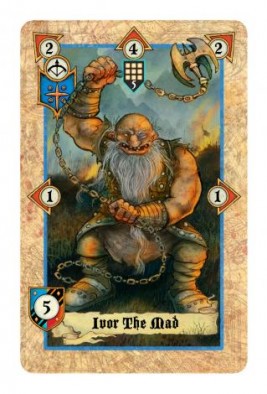 With Nick living in Worthing, on the south coast of England, and me living in Tottenham in North London, it was difficult to get together to collaborate. At that point, we tended to work in isolation, rarely in the same room, both beavering away on solo projects then handing them over when we got stuck. So, after Salute, with a meeting date with Ronnie booked, I went and stayed in Worthing and we hit the design process hard.
With Nick living in Worthing, on the south coast of England, and me living in Tottenham in North London, it was difficult to get together to collaborate. At that point, we tended to work in isolation, rarely in the same room, both beavering away on solo projects then handing them over when we got stuck. So, after Salute, with a meeting date with Ronnie booked, I went and stayed in Worthing and we hit the design process hard.
Nick and I put aside our separate games and other projects and pushed Lords of War on – and not just a couple of steps but leaps and bounds. We developed so many tight and focused mechanics that we realised, just in standalone games, that we had about 20 different Lords of War variants, each of which did new things but still functioned when played together.
I had figured out a Ranking system for building individual units which kept decks balanced (originally this system was underpinned by a complex points system to allow for custom deck builds) and, in doing so, we knew we had cracked it.
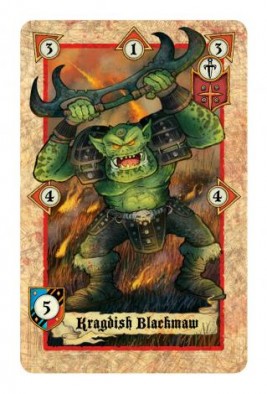 When we then went to meet with Ronnie, we took with us two copies of the game. One was Nick’s original, Lords of War: Celts versus Romans. The second was a new version, Lords of War: Elves versus Dwarves (as it was then). We had used Ronnie’s own artwork for Elves versus Dwarves, pasting in pictures copied from the Mantic website or photos of Kings of War miniatures.
When we then went to meet with Ronnie, we took with us two copies of the game. One was Nick’s original, Lords of War: Celts versus Romans. The second was a new version, Lords of War: Elves versus Dwarves (as it was then). We had used Ronnie’s own artwork for Elves versus Dwarves, pasting in pictures copied from the Mantic website or photos of Kings of War miniatures.
The double-deck had been built especially for him.
Little did Ronnie know, incidentally, that when we took that train journey to Nottingham we had other games in our bags. We had Sons of the Pharaoh, which was working like a dream, Kung Fu, another card game with its own unique combo-chaining combat mechanic, and Labyrinth, a Greek-themed game in which you played the children sacrificed to the Minotaur on Crete, puzzling and battling King Minos and Daedalus’ evil creations.
Alas, during the Mantic meeting, none of these even got taken out of their boxes.
 Once we had sat down, Ronnie laid out his vision. He saw Lords of War as a blister-pack game – a traditional CCG in terms of business model, although using our most simple Lords of War mechanic. He had no interest in the new version of Lords of War (we set up a game, but he only took three turns) and he had no interest in any other characters featuring on the cards beside his own.
Once we had sat down, Ronnie laid out his vision. He saw Lords of War as a blister-pack game – a traditional CCG in terms of business model, although using our most simple Lords of War mechanic. He had no interest in the new version of Lords of War (we set up a game, but he only took three turns) and he had no interest in any other characters featuring on the cards beside his own.
He wanted Lords of War to be a Mantic branded product, to buy it from us for a 5% royalty on profits, and to only print 300 copies of the game. He wanted to use photos of his miniatures rather than original artwork on the cards, which was disappointing, and I had taken a look at Mantica, the fictional Mantic Games universe, and had sketched out some ideas as to how we could help build his burgeoning world into something really special.
Ronnie’s vision and ours simply didn’t match up. Our ideas got us nowhere.
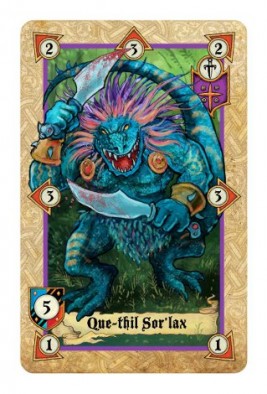 On the positive, Ronnie gave us some invaluable advice. The first Dwarf King’s Hold games had just been developed, so we discussed what had been involved with that, as well as taking one of the first looks anyone had ever had at Warpath.
On the positive, Ronnie gave us some invaluable advice. The first Dwarf King’s Hold games had just been developed, so we discussed what had been involved with that, as well as taking one of the first looks anyone had ever had at Warpath.
Ronnie also talked us through licensing through other companies – about the rates people paid to involve themselves with Star Wars, Lords of the Rings, Star Trek and so on. We learned a lot from him, and the websites and contacts he passed onto us hugely informed what came next.
Ultimately though, Nick and I left the Mantic offices feeling dejected. After succeeding in selling the idea of the original Lords of War, we had now both concluded that the new version was better. It had so much more potential – there was so much more to it.
On the train home, we played more demos of our other games – two or three different concepts. Then we took Lords of War out again, the new version, and played it again. Ronnie had, frankly, hated the Dwarf Sharpshooter, which we loved. And he didn’t like the backwards-attacking units, or the diverse range of shield values. And we now knew that the cost of licensing was beyond us – when we got home, we did more research, and concluded there was just no way that we, as a brand new, two-man team, could afford to embark on that kind of enterprise.
So we knew that licensing third party properties was out, and that working with publishers was out (we had tried our best and utterly failed), but we knew people loved Lords of War. It connected with gamers, and the core idea – of smooshing together characters from across time and space, gaming genres and different media – was a superb one.
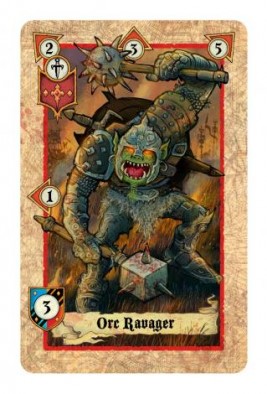 All the things we had learned necessitated Nick and I self-publishing. It was a huge risk, but we needed to put our money where our mouths were – to develop something ourselves, from scratch, and make our name in the business.
All the things we had learned necessitated Nick and I self-publishing. It was a huge risk, but we needed to put our money where our mouths were – to develop something ourselves, from scratch, and make our name in the business.
The focus of all our efforts – for Nick, outside of marking books and planning lessons, and for me outside of my freelance tutoring, writing and my film and TV podcast, The Smart Arts Review – had to switch to building the infrastructure of a business.
The division of labour fell down to Nick managing the legal, financial and logistics side of the business while I took on the responsibility of finding artists, getting the theme and tone of the game right, continuing play testing and ensuring that our vision for Lords of War was something consumers could get behind.
Of all the things we had to do the hardest one, by a country mile, was finding an artist. We wanted the game to look friendly enough that children and women wouldn’t be alienated by it. It had to have a sense of humour, and to look unlike anything else out there.
More than anything though, it had to appeal to the hard core gamer, because hard core gamers are the beating heart of the board and card game industry. It’s their infectious passion and support for new games which makes or breaks them, so putting them first was our number-one priority.
 When it came to artists, we threw the net very wide. We must have written to fifty individuals. We didn’t have much money, so we had to find people who would not only be willing to take a risk financially but who would understand what we needed. We wanted to do everything within the UK, so they needed to live here. They should be someone with whom I had some chemistry, and – significantly – be available.
When it came to artists, we threw the net very wide. We must have written to fifty individuals. We didn’t have much money, so we had to find people who would not only be willing to take a risk financially but who would understand what we needed. We wanted to do everything within the UK, so they needed to live here. They should be someone with whom I had some chemistry, and – significantly – be available.
Letters, emails and phone calls were made to art schools all over the country. We contacted artists who had worked in video games and comic books. They auditioned, drew us example pieces, and although many of them were superb they just weren’t right.
Then, through a head of an art college we heard about this guy who had been around during the Cosgrove Hall days – the iconic British animation studio behind Count Duckula, Danger Mouse, Jamie and the Magic Torch, Noddy and dozens more. He worked in children’s books these days, but might be open to something new.
His name was Steve Cox, and one afternoon I gave him a call.
Martin Vaux
If you would like to write articles for Beasts of War then please contact me at [email protected].
Supported by (Turn Off)
Supported by (Turn Off)
Supported by (Turn Off)









































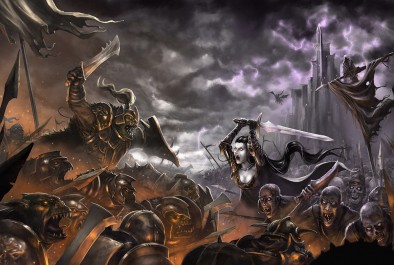


































I really love the narrative feel in it, can’t wait for the next installment.